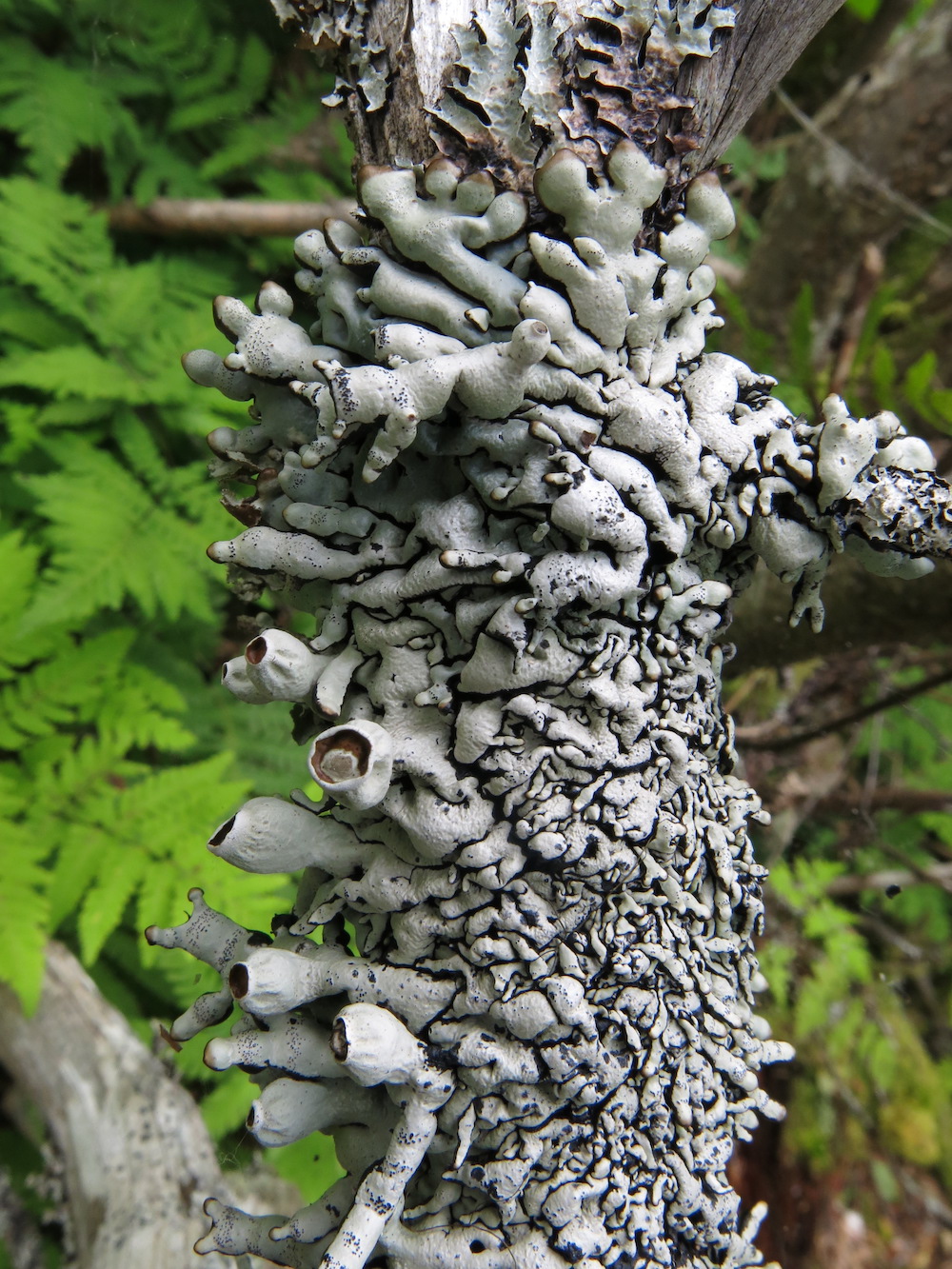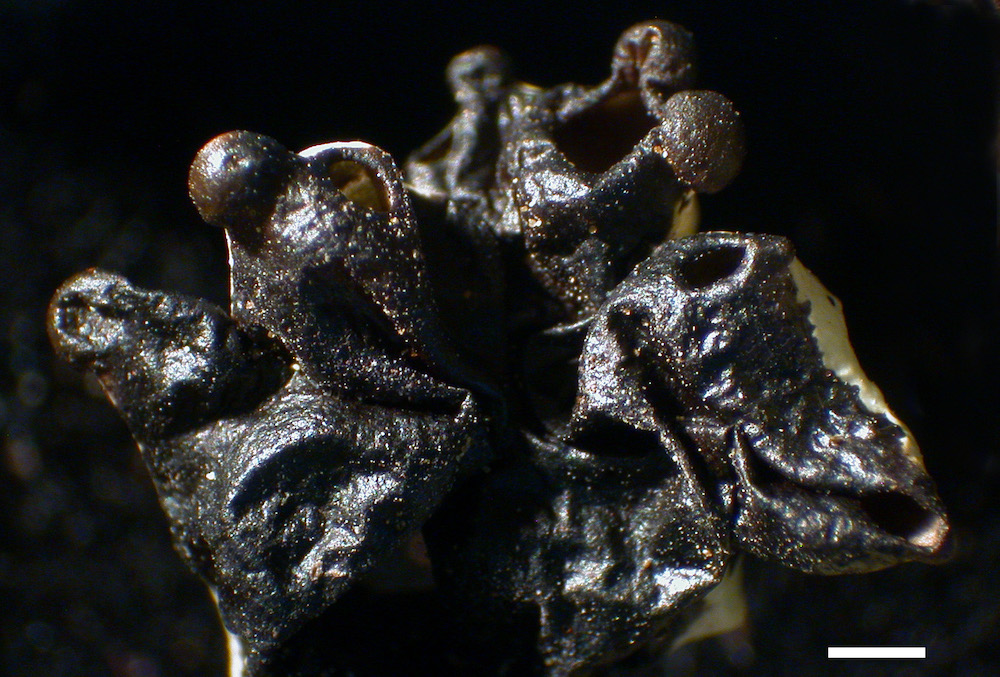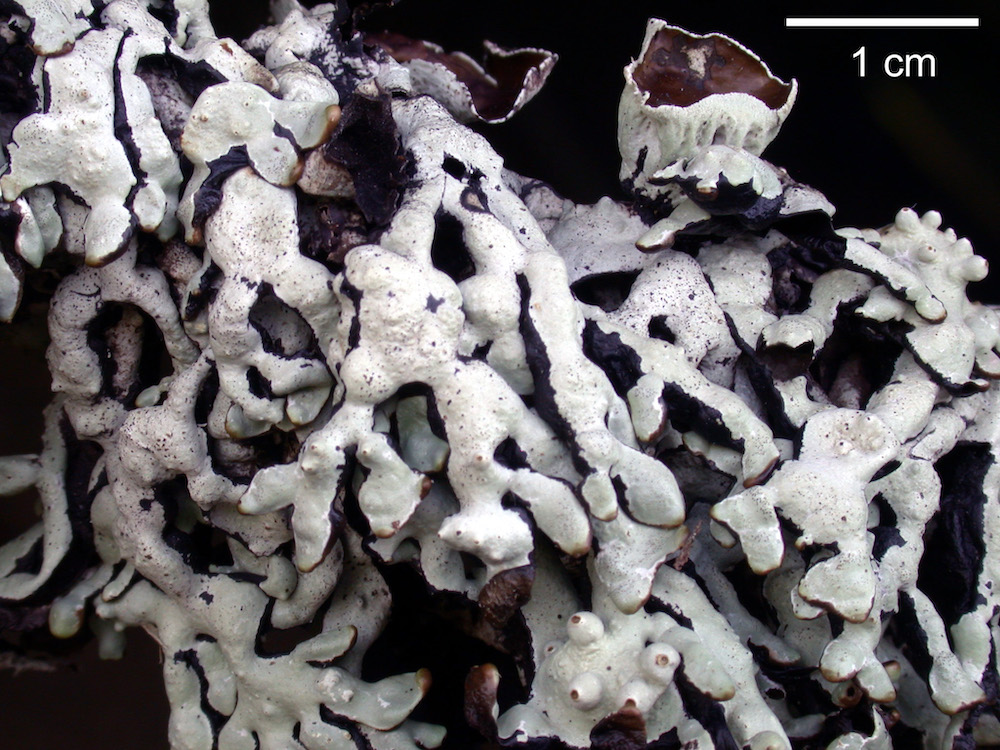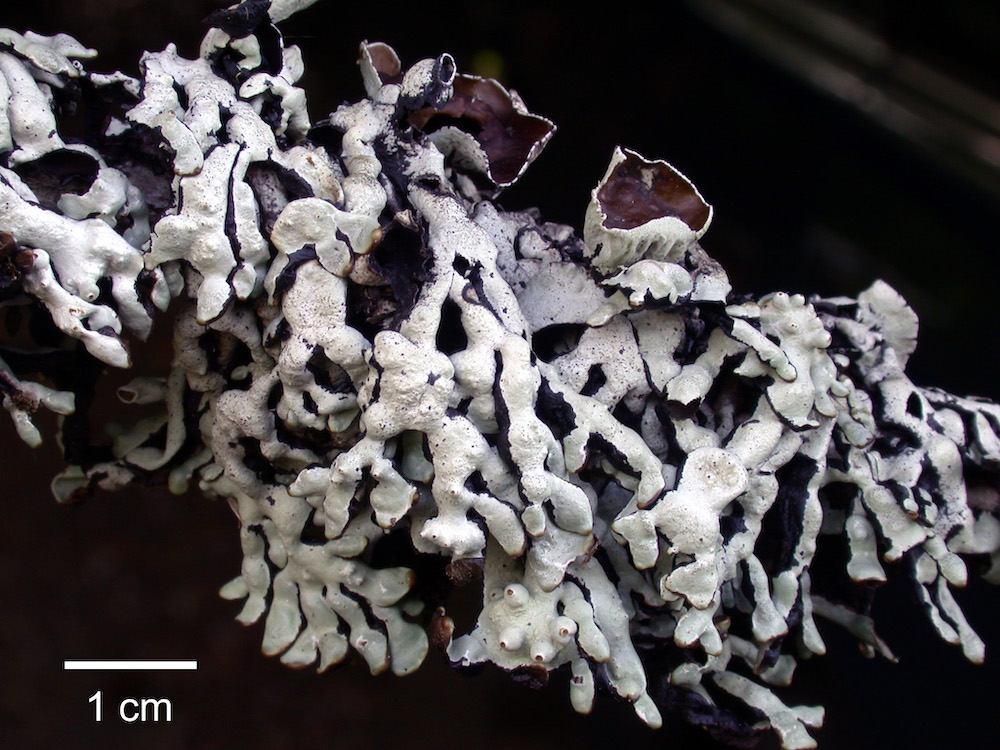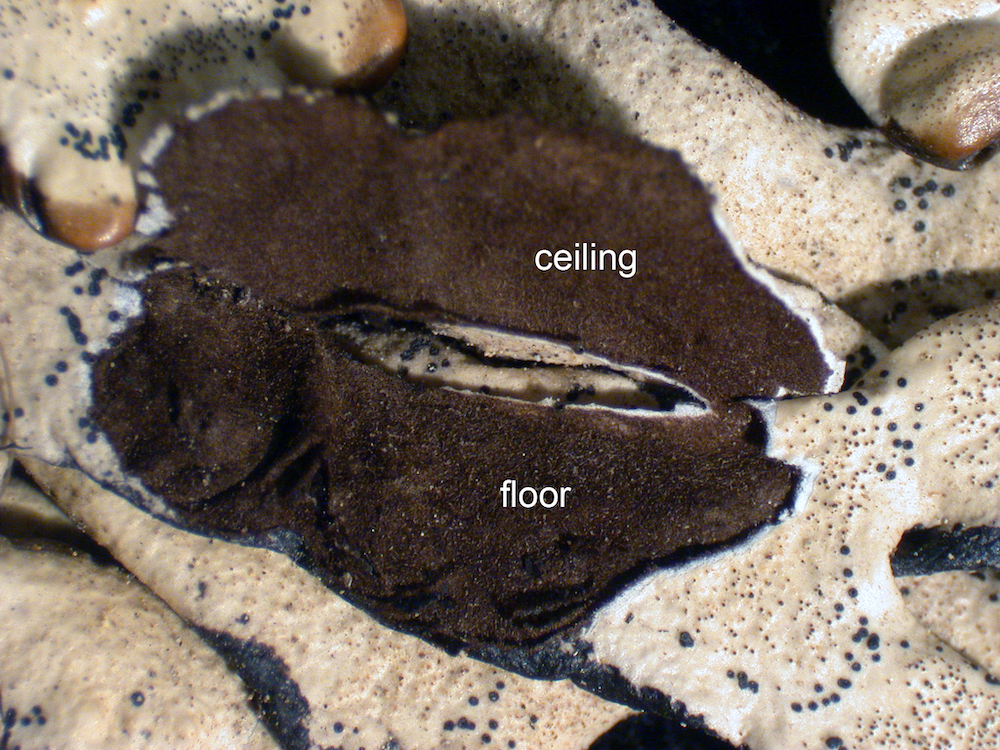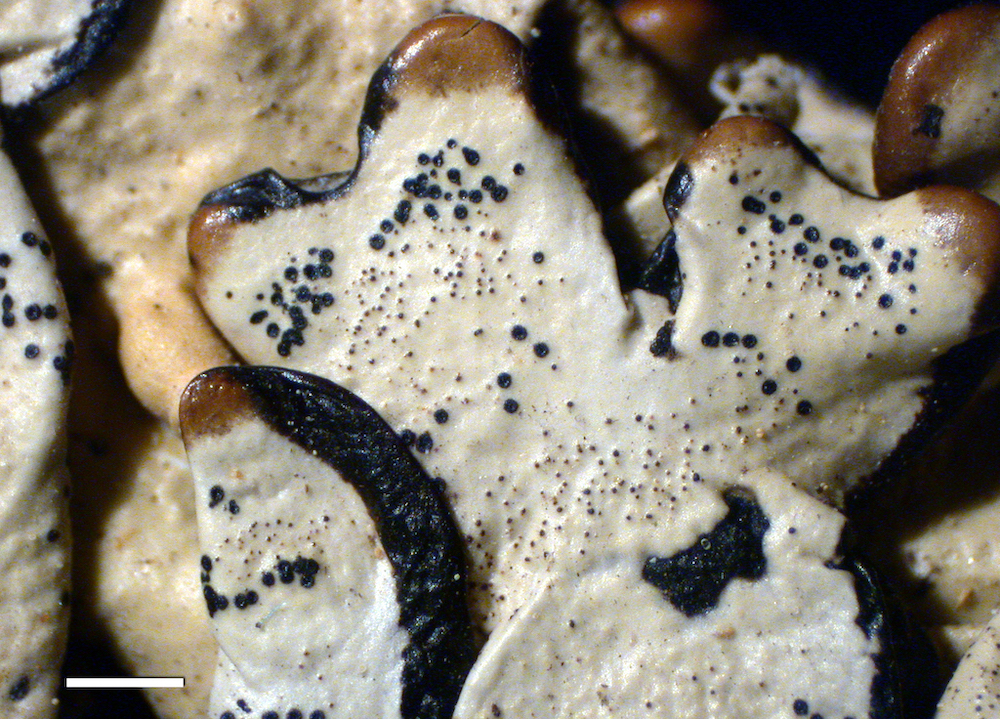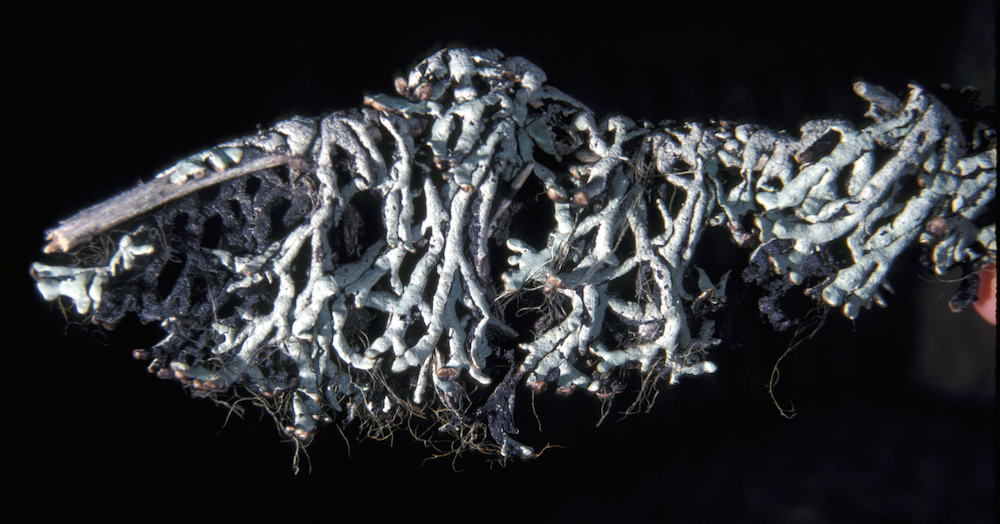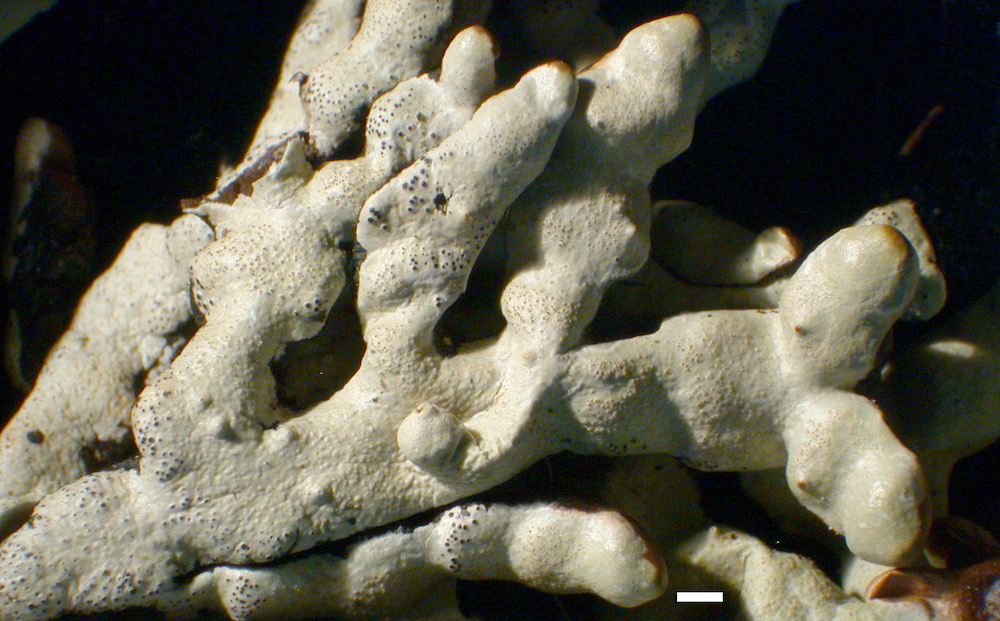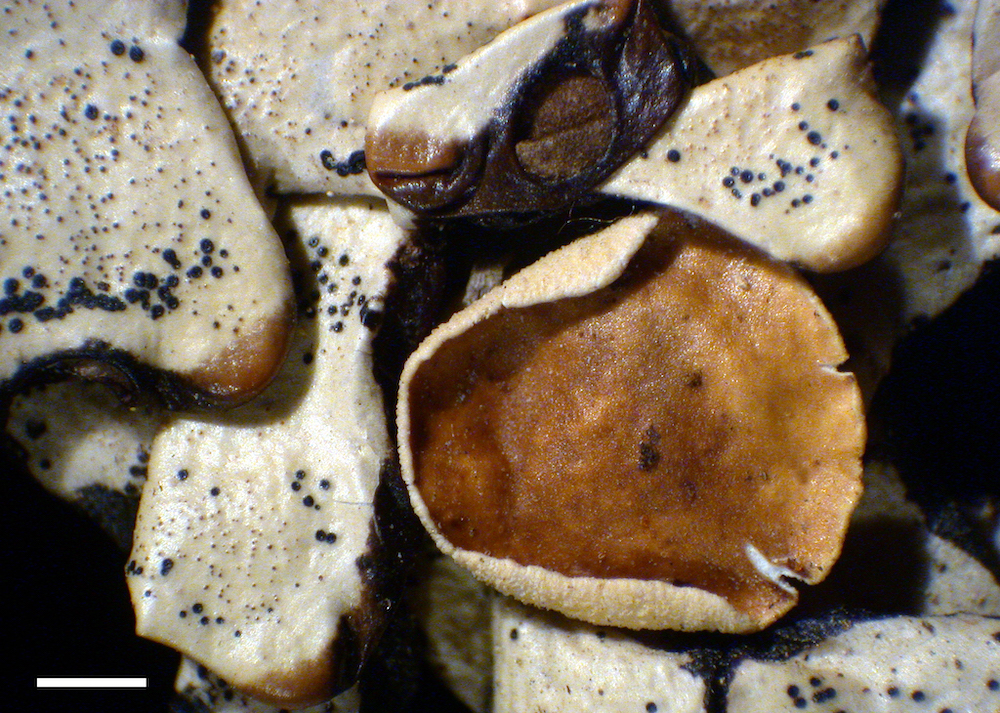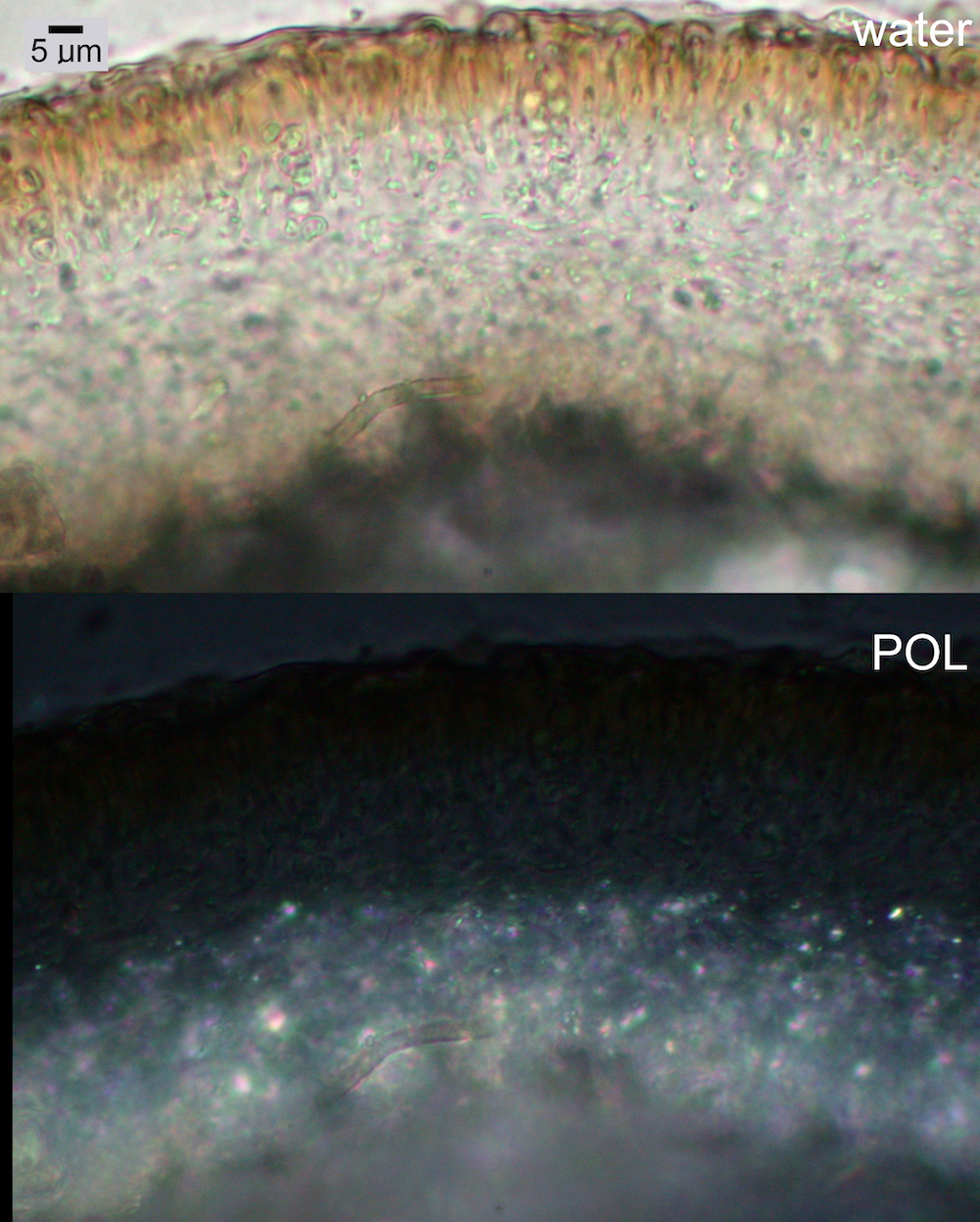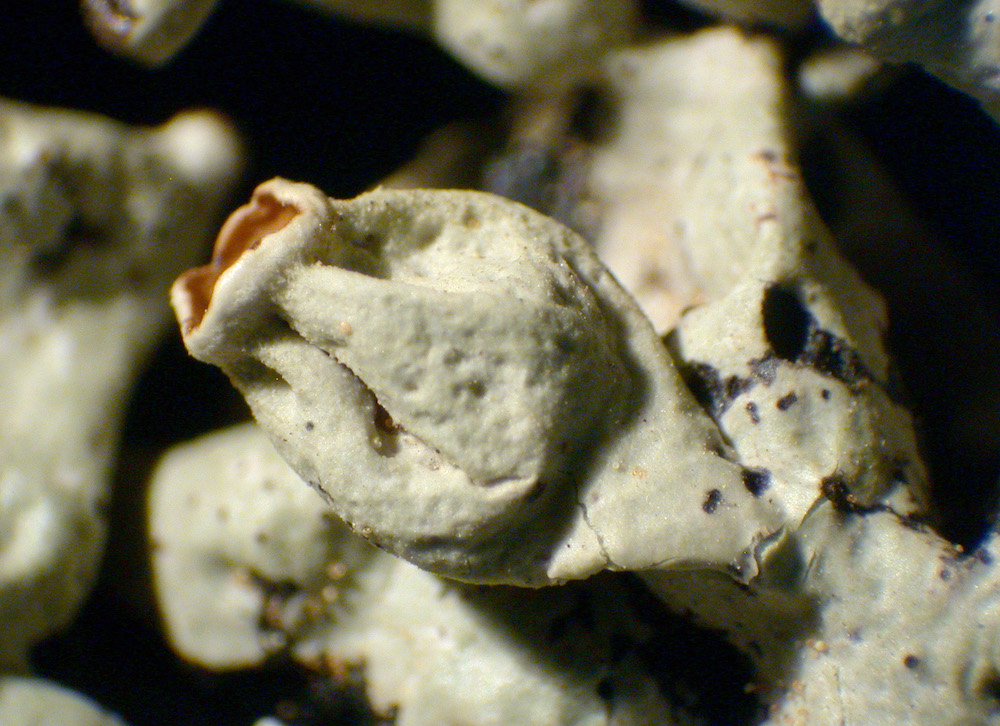Click on Characteristic name for explanation. Click on image for larger version.
Overview
| Synopsis:
| Large, appressed or trailing, puffy, often nodulose lobes with sparse to abundant perforations in lobe tips and axils; lobe cavity with dark ceilings and floors; medullary spot tests negative.
|
| Distribution:
| Alaska to California, inland to Montana; North American endemic. Although broadly sympatric, H. apinnata appears to be somewhat more widespread than H. enteromorpha. In particular, H. apinnata seems to extend farther north and west along the Pacific coast of Alaska (to Attu Island), and is usually the more common of the two species in inland localities. Here it is especially common in the glacial refugia of the Clearwater Drainage in Idaho, where it occurs in oldgrowth forests at low to middle elevations.
|
| Habitat:
| oceanic to suboceanic forests
|
| Range:
| Arctic, Subarctic, Alpine, Pacific Northwest Immediate Coast, Northern Rocky Mountains, Pacific Northwest
|
| Substrate Notes: | Most often on conifers, occasionally on hardwood trees and shrubs
| | Abundance in North America: | Common
| | Substrate: | Typically
| | Host: | Conifers and hardwoods, both bark and wood
| | On Rock: | Never
| | On Moss/Detritus/Sod: | Never
| | Authority: | Goward & McCune
| | References: | Goward & McCune (1993)
| | Synonymy: | None
|
|
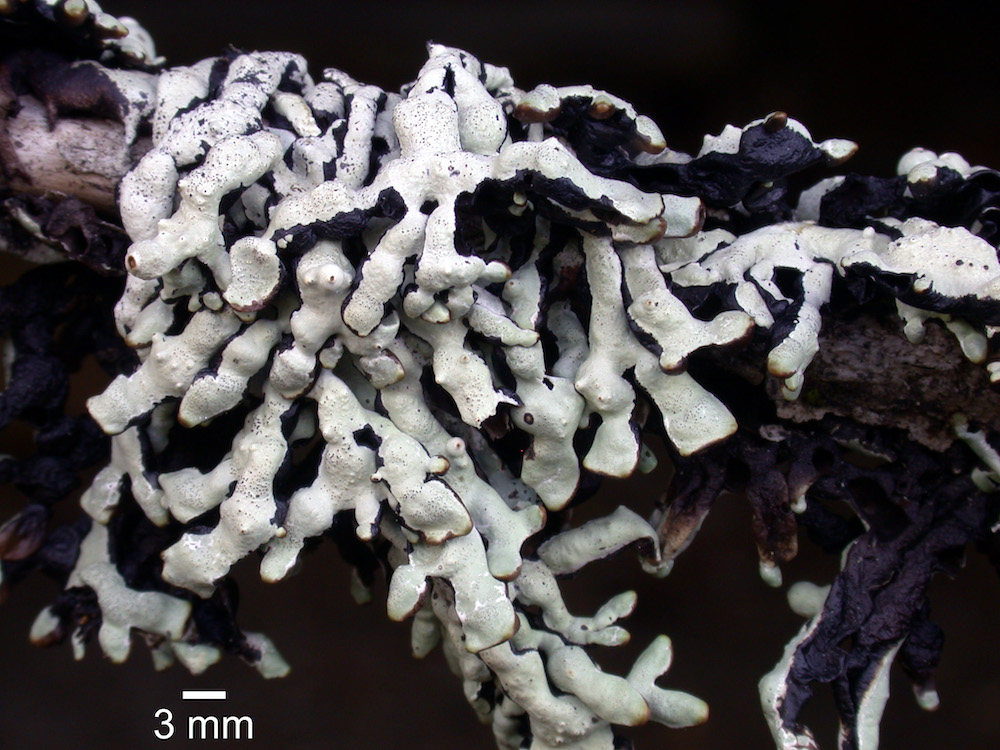
Habit
|

